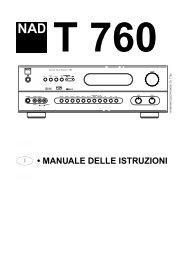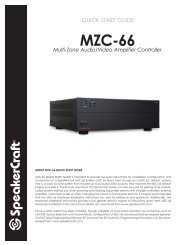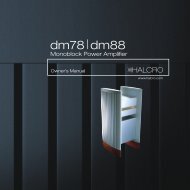No431 & No432 Owner's Manual - Mark Levinson
No431 & No432 Owner's Manual - Mark Levinson
No431 & No432 Owner's Manual - Mark Levinson
Create successful ePaper yourself
Turn your PDF publications into a flip-book with our unique Google optimized e-Paper software.
4. Take the linked preamplifier out of standby.<br />
• All linked power amplifiers should come out of standby as<br />
well. If this does not occur, repeat steps 3 and 4. If problems<br />
persist, contact <strong>Mark</strong> <strong>Levinson</strong> Customer Service at 781-<br />
280-0300 or www.marklevinson.com.<br />
Link Controls<br />
Linking <strong>Mark</strong> <strong>Levinson</strong> components allows them to share certain<br />
controls. The table below provides a general description of<br />
controls the Nº432/431 shares with other linked components.<br />
Some controls may not be available for certain component<br />
combinations. Other <strong>Mark</strong> <strong>Levinson</strong> components may share<br />
additional controls. Refer to the appropriate documentation for<br />
additional information.<br />
Note the following:<br />
• Linked components must be powered on ONE AT A TIME in<br />
the specific order listed in step 3 (previous page) to ensure<br />
proper functioning of Link controls.<br />
• Link controls must be enabled on the linked digital transport<br />
linking menu, which allows activation and deactivation of<br />
individual Link controls. Refer to the appropriate digital<br />
transport owner’s manual for additional information.<br />
24<br />
• Some <strong>Mark</strong> <strong>Levinson</strong> digital transports accommodate a maximum<br />
of four front panel display characters. In these cases, certain<br />
input names appear abbreviated on the front panel display.<br />
For example, an input named No320S will appear as No32 on<br />
the digital transport front panel display even though the<br />
input is associated with the Nº 320S.<br />
• The linked preamplifier and power amplifier(s) must be in the<br />
same standby-state to allow the linked power amplifier(s) to<br />
enter standby after a power failure.<br />
Control<br />
Component<br />
Standby Link<br />
Preamplifier<br />
Placing the linked preamplifier into standby<br />
also places all other linked power amplifiers<br />
into standby. Taking the linked preamplifier<br />
out of standby also takes all other linked power<br />
amplifiers out of standby.<br />
Power Amplifier<br />
Placing a linked power amplifier into standby<br />
also places all other linked power amplifiers<br />
into standby. Taking a linked power amplifier<br />
out of standby also takes all other linked power<br />
amplifiers out of standby.<br />
Fault Condition<br />
Link<br />
If a linked power amplifier experiences a fault condition,<br />
it will report the fault condition to the linked preamplifier.<br />
If this occurs, the power amplifier number and fault<br />
condition code will appear on the preamplifier’s front<br />
panel display.<br />
Code<br />
HOT!<br />
DCO!<br />
Description<br />
Indicates a thermal fault<br />
condition<br />
Indicates an uncorrectable<br />
DC offset<br />
The power amplifier number refers to its position in the<br />
slave chain. For example, AMP1 refers to the first power<br />
amplifier in the slave chain. Power amplifier fault<br />
condition codes are described in the table to the right.<br />
Refer to “Extensive Protection” for additional information<br />
about fault conditions.



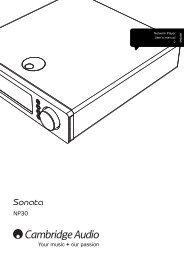
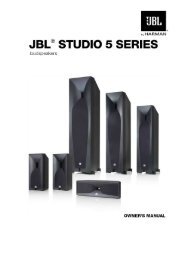
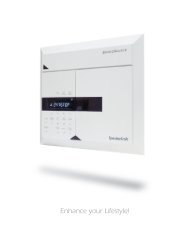
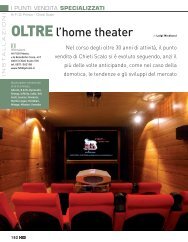
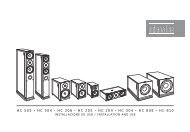
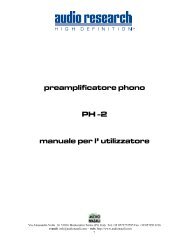

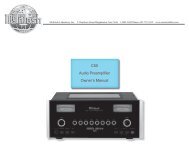
![Product Brochure [pdf] - Audio Classics](https://img.yumpu.com/22280099/1/190x245/product-brochure-pdf-audio-classics.jpg?quality=85)
